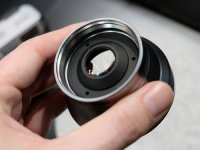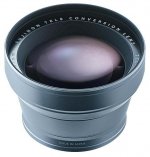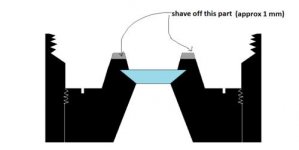rondo
Established
Hi, I hope someone can help. Judging from this picture, can anyone guess how this lens can be disassembled?
The three recessed holes in the back are approx 2 mm deep. There is no indication of any screws in the holes. Maybe they are to receive a three-legged apparatus that you use to unscrew the back plate? I am thinking that the back-plate is threaded into the lens housing, but maybe I am wrong...If I manage to remove the back-plate (made of aluminum maybe?) I am hoping to be able to modify it to match another camera body...I guess, it is a long shot.
Any thoughts will be greatly appreciated,
Thanks,
The three recessed holes in the back are approx 2 mm deep. There is no indication of any screws in the holes. Maybe they are to receive a three-legged apparatus that you use to unscrew the back plate? I am thinking that the back-plate is threaded into the lens housing, but maybe I am wrong...If I manage to remove the back-plate (made of aluminum maybe?) I am hoping to be able to modify it to match another camera body...I guess, it is a long shot.
Any thoughts will be greatly appreciated,
Thanks,




